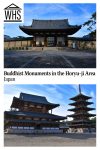Buddhist Monuments in the Horyu-ji Area
By Brandon
What are the Buddhist Monuments in the Horyu-ji Area?
Buddhist Monuments in the Horyu-ji Area was Japan’s first World Heritage site. The UNESCO designation includes 48 Buddhist structures in two temple sites: Horyu-ji and Hokki-ji. These temple complexes are located in the Japanese Prefecture of Nara, not far from the city of Nara. The two complexes consist of structures that are considered to be the oldest surviving wooden structures in the world. They are over 1,300 years old: Horyu-ji dates back to the year 607 while Hokki-ji was built in the year 708.
Disclosure: This article contains affiliate links. Making a purchase through an affiliate link will mean a small commission for this website. This will not affect your price. Privacy policy.
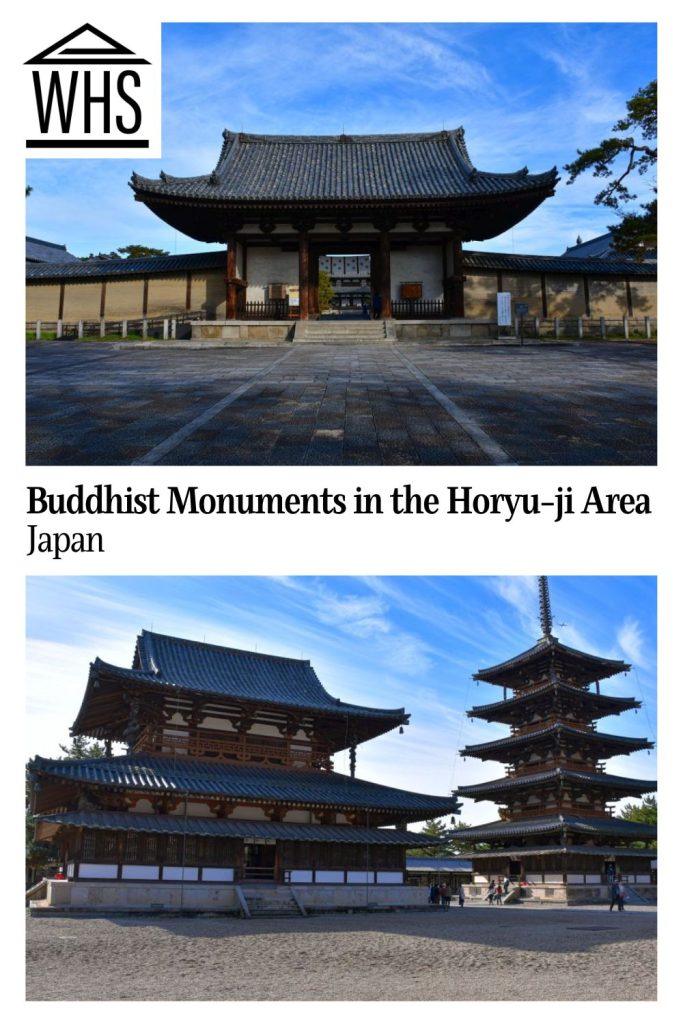
Why are these Buddhist monuments a UNESCO World Heritage site?
The Buddhist Monuments in the Horyu-ji Area were added to the list in 1993. According to UNESCO, the temples are “masterpieces of wooden architecture, both in overall design and in decoration.” They “represent the adaptation of Chinese Buddhist architecture and temple layout to Japanese culture and the subsequent development of a distinct indigenous style.”
Additionally, they are the earliest Buddhist temples in Japan, dating almost to the time Buddhism arrived in Japan. So these complexes represent a significant moment in the history of Buddhism in Japan.
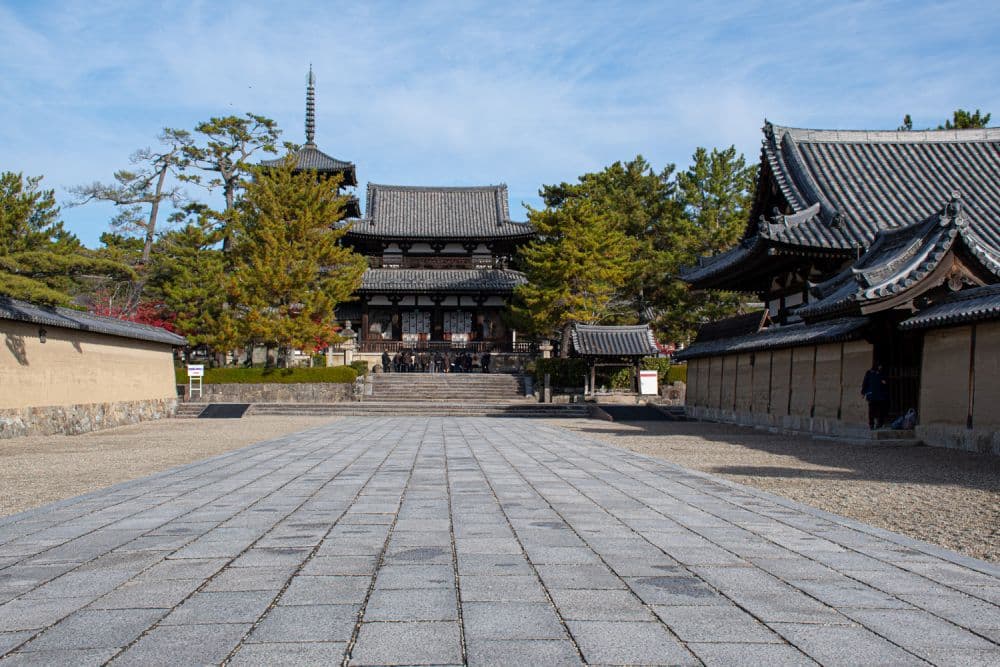
What can you expect on a visit to these Buddhist monuments?
Horyu-ji
Visitors usually start at Horyu-ji. This complex is much bigger and it takes time to visit the buildings and museums. If you are lucky, there will be volunteer tour guides on site to help explain the history and significance of the temples.
Horyu-ji is huge. It was built in 607 by Prince Shotoku to fulfill his father’s wish to construct the temple to worship Buddha. Horyu-ji consists of two distinct areas, Saain Garan and Toin Garan. There is a five-story pagoda at Horyu-ji, the main hall, and a unique temple in the shape of an octagon called Horyu-ji Toin Yumedono, among many other structures.
Hokki-ji
Hokki-ji is much smaller in comparison to Horyu-ji and is a little further from town. It is not as well maintained as Horyu-ji, and it shows. The grounds are a bit overrun and the buildings could use a little maintenance. Given the state of this site, it is still a must-visit. Completed in 708, Hokki-ji has a three-storied pagoda that is 24 meters (79 feet) tall and is considered to be the oldest in Japan.
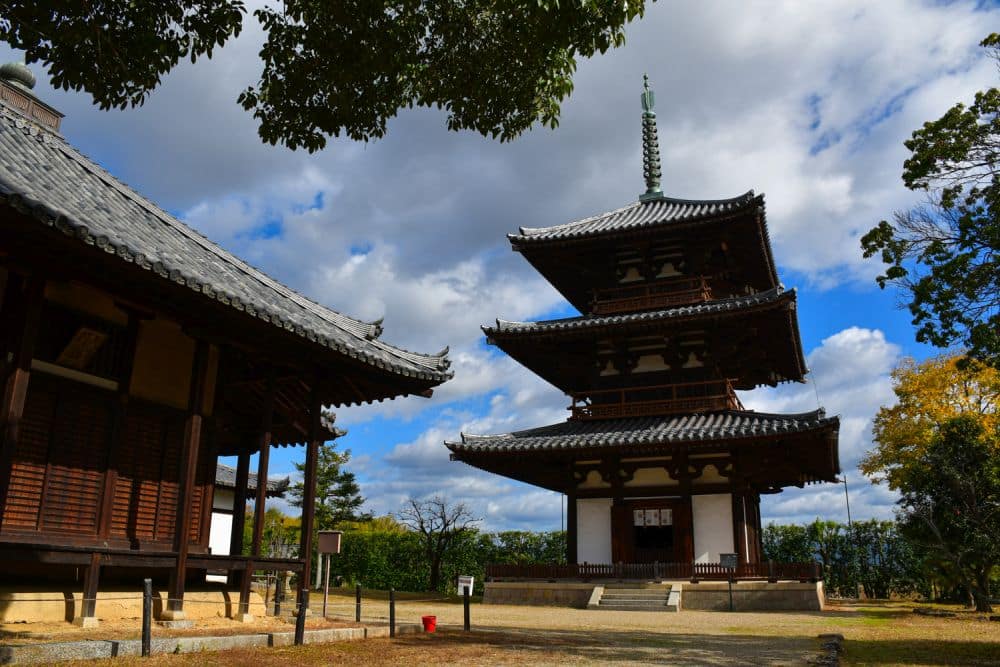
Are these Buddhist Monuments in the Horyu-ji Area worth visiting?
Not many people visit or even know about the Buddhist Monuments in the Horyu-ji Area. When traveling to Japan, many people will skip this site and visit other UNESCO-listed temples in the cities of Kyoto and Nara. Yet these Buddhist monuments are certainly worth a day trip from Nara and even worth going out of your way for, while traveling in Japan. Since these temples are considered to be the oldest in Japan and are home to the oldest wooden structures in the world, it is a significant site to see.
What sorts of travelers would like Horyu-ji and Hokki-ji?
The Buddhist Monuments in the Horyu-ji Area would pique anyone’s interest. Visitors travel to Japan to view the ancient temples and learn about the culture and history. Since these temples are some of
the most important in Japan, anyone would benefit from visiting them, especially if interested in Japanese history and architecture.
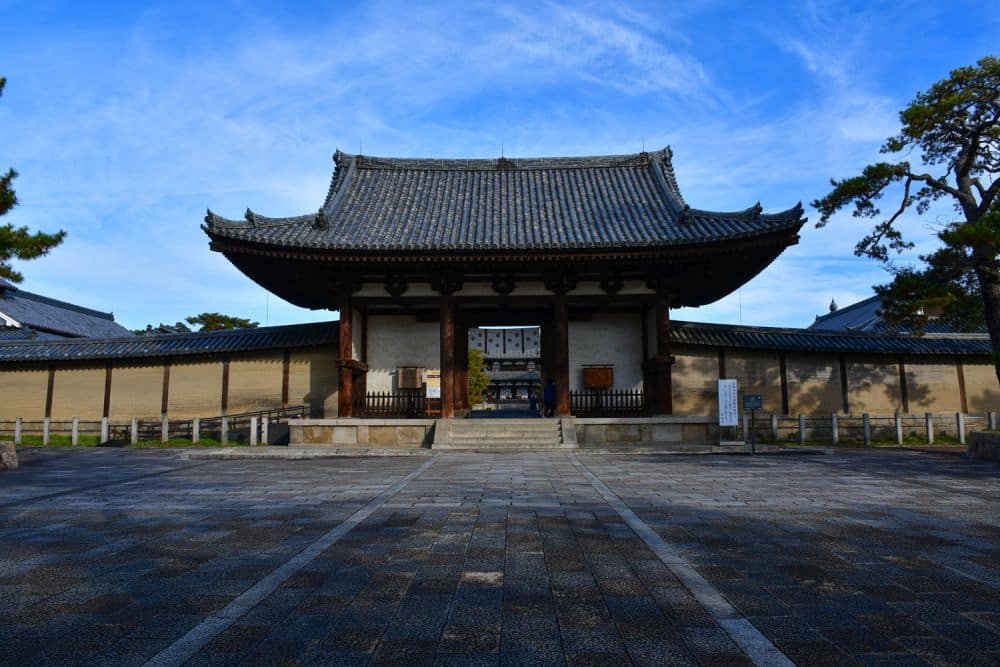
Tips for visiting the Buddhist Monuments in the Horyu-ji Area
Although not as busy or popular as temples in Kyoto or Nara, The Buddhist Monuments in the Horyu-ji Area can be busy, especially with local tourists and school groups. To avoid some of the crowds, go
early when the site opens or go later in the afternoon once peak visiting hours have passed.
If visiting one temple, make sure to add both to your itinerary. Horyu-ji deserves about 1-2 hours while Hokki-ji is much smaller: 30 minutes to an hour is all you need for a visit.
Buy your ticket ahead of time. It includes admission to Horyu-ji, Hokki-ji, and two other temples nearby: Chugu-ji & Horin-ji.
Sometimes, there are English speaking-tour guides on site who are more than happy to give foreign visitors a free tour of the site. These guides are volunteers and do a remarkable job at explaining the
history of the sites as well as answering any questions relating to the sites or Buddhist religion.
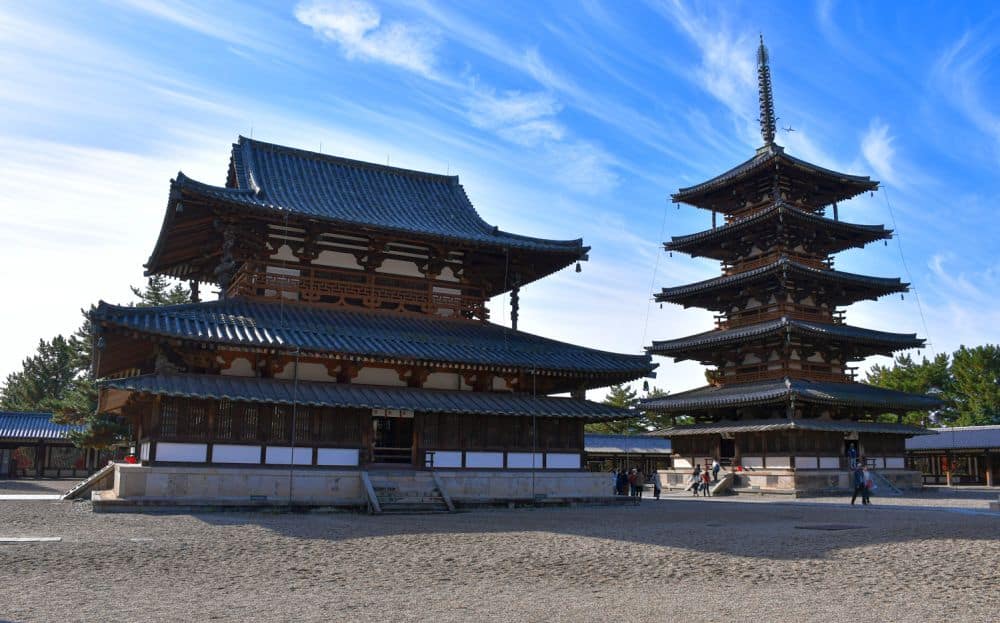
Where are these monuments?
They are both located in the town of Ikaruga which is located in the Japanese Prefecture of Nara. Use the map below to find accommodations in the region:
If driving by personal vehicle, there are large parking areas at Horyu-ji that are paid parking. Hokki-ji has a small unpaved lot that is free. Many visitors will drive here from Kyoto, Nara, or Osaka. From Kyoto, it is about a 1.5-hour drive. If driving from Nara, it is a half-hour drive. If coming from Kansai Airport in Osaka, the trip will take about an hour.
There is public transportation and a train line to Ikaruga. Take the Yamatoji Line from Nara to the Horyuji Station, which takes about 15 minutes. This is a JR line, so if you’re traveling on a Japan Rail pass you can use it for this trip. From the station, it is about a 20-minute walk (1.5km or 1mi) to Horyu-ji. Hokki-ji is about a 20-minute walk from Horyu-ji (1.5km or 1 mi), and a 35-minute walk (2.6km or 1.6mi) back to the train station.
For more information about the Buddhist Monuments in the Horyu-ji Area, their opening hours and admission fees, see their official website.
Have you been to Horyu-ji or Hokki-ji? If so, do you have any additional information or advice about this UNESCO World Heritage site? Please add your comments below!

